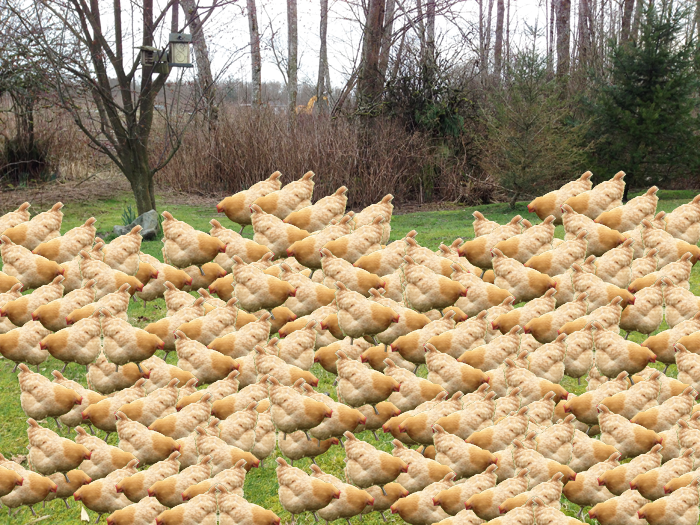After heavy, early morning rains, the sun is out and the chickens are preening themselves along the banks of the stream which flows from early fall into late spring through a man and his hoe®. Chives and stinging nettles are shooting out in full force. The earth is waking up after taking a deep, long sleep.




Month: March 2014
-
Sunny Spring Morning
-
More of the Crew
Here are more of the wonderful crew at a man and a hoe®. Each hen is special. Each hen has her favorite nest. Each hen has her favorite rooster. Each lays a unique egg. Here at a man and a hoe®, each hen is treated with the love and respect they deserve.

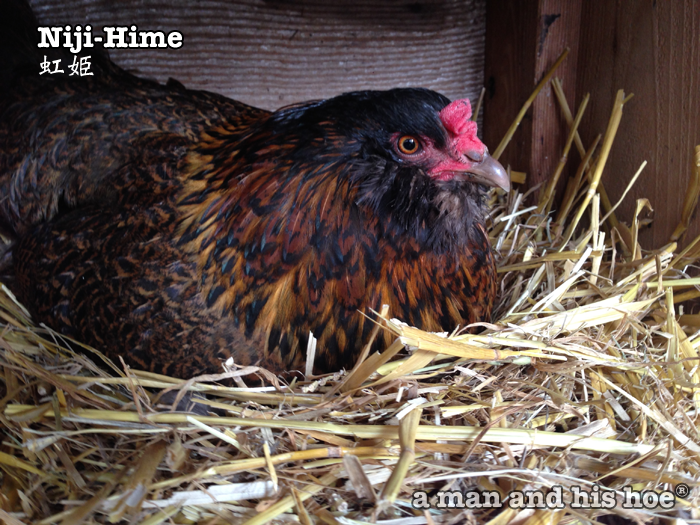

-
Spring Is Here
Spring is here at a man and his hoe®. Vibrant shoots of stinging nettles bursting out of the ground prove it. The best vegetables never make it into the stores. Once in a great while, I’ve seen stinging nettles in a farmer’s stall in a farmer’s market. But here, from now through May, there is an endless supply of succulent stinging nettles to eat. The best way to describe them is spinach on steroids. Delicious steamed, fried, or used in soups, they are especially delightful made into a soup with a touch of cream.
With all the new shoots and bugs emerging, the chickens are having a field day. What a difference two sunny days in a row make.
The three hens below, Ina-Svenda, Cognac, and Kuro-hime, laid three of the eggs in the colander. I’m not sure who laid the fourth egg. Even though I gather eggs throughout the days, sometimes there are too many hens in a row using a single nest to determine which hen laid which egg. Ina-Svenda laid the egg on the far right, Cognac the dark one, and Kuro-hime the white one.

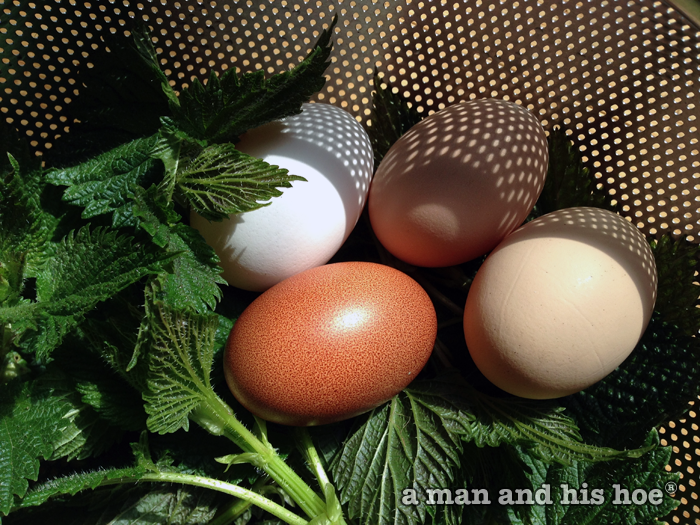
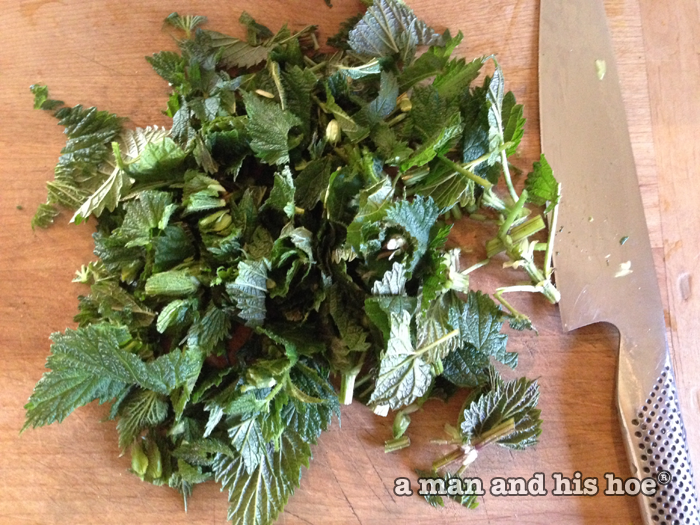
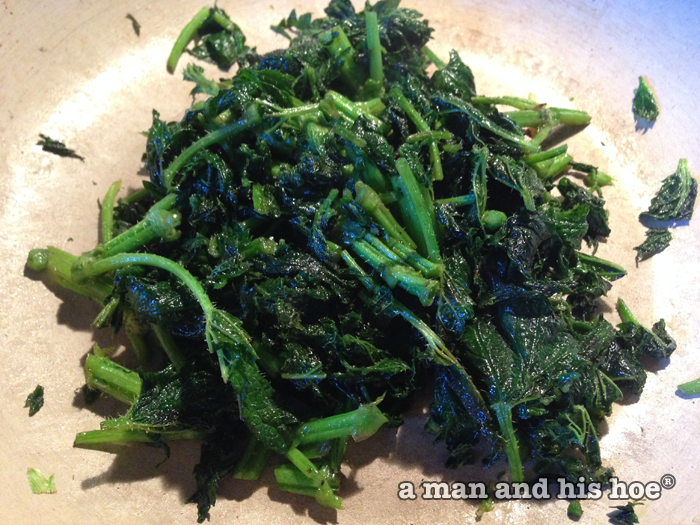
-
Treating Chickens Humanely – Who Laid Your Egg?
If we eat eggs, chicken, or other animals, we are all concerned about how they are raised. But it’s impossible to go visiting all the farms which produce our food, especially when we live in cities long distances from the farms. And often, it’s not clear exactly which farm raised the egg, dairy, and meat products we are buying.
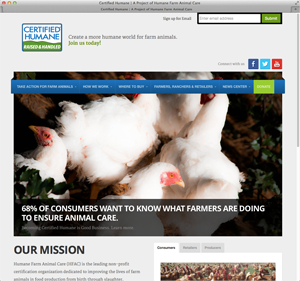 So we rely on others to monitor the farms and let us know if they are treating their animals humanely. One such organization is Humane Farm Animal Care (HFAC). To help consumers pick products which are humanely raised and handled, they have developed a Certified Humane label, farms and producers can place on their products. According to their webiste:
So we rely on others to monitor the farms and let us know if they are treating their animals humanely. One such organization is Humane Farm Animal Care (HFAC). To help consumers pick products which are humanely raised and handled, they have developed a Certified Humane label, farms and producers can place on their products. According to their webiste:The goal of the program is to improve the lives of farm animals by driving consumer demand for kinder and more responsible farm animal practices.
This sounds fantastic, but I was wondering what they consider to be a humane way of treating chickens. So I went to their standards page where they list their standards. They have separate standards for beef cattle, broiler chickens, laying hens, dairy cows, goats, pigs, sheep, turkeys, young dairy beef, and bison.
Their broiler chicken standards has rules for feed, water, buildings, floor and litter, lighting, space allowance, thermal environment and ventilation, environmental enrichment, free-range, provisions for chicks, as well as standards covering management, health care practices, transportation, and processing.
Many of the standards seem fine, however when it comes to the space allowance, they consider giving 1 square foot for ever 6 pounds of chicken to be humane. This works out to about 1 and a half to 2 square feet per chicken. If I was purchasing a chicken which had a Certified Humane label, I would expect that it be raised in a much less crowded condition.
HFAC allows housed laying hens to be kept in even more crowded conditions. Depending on the type of housing, acceptable densities range from just 1 square foot per hen to 1.5 square feet per hen. In a hundred square foot area (a small 10 by 10 foot bedroom) HFAC will accept putting 66 to 100 hens. It boggles my mind how this could possible be considered humane treatment of laying hens.
For pastured hens, HFAC allows farmers to raise 1,000 chickens on 2.5 acres, or 400 chickens per acre. For free range hens, HFAC’s minimum outdoor space is just 2 square feet per hen.
Are these standards truly humane?
Ever wonder what the hens look like which laid your a man and a hoe® eggs? Here are photos of a few of the egg layers here.
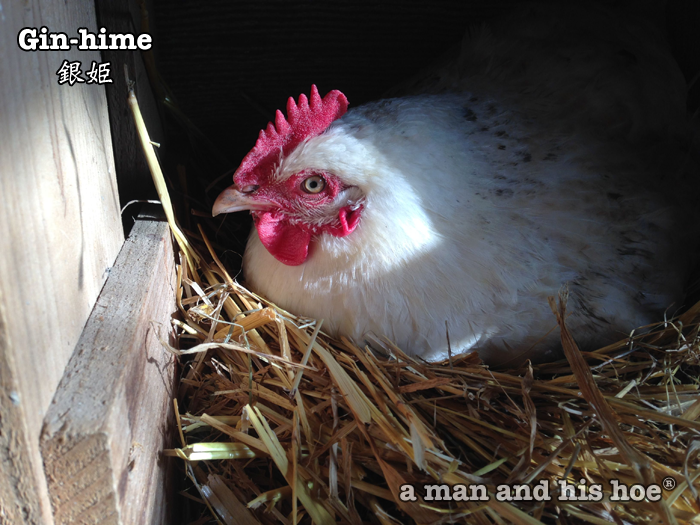
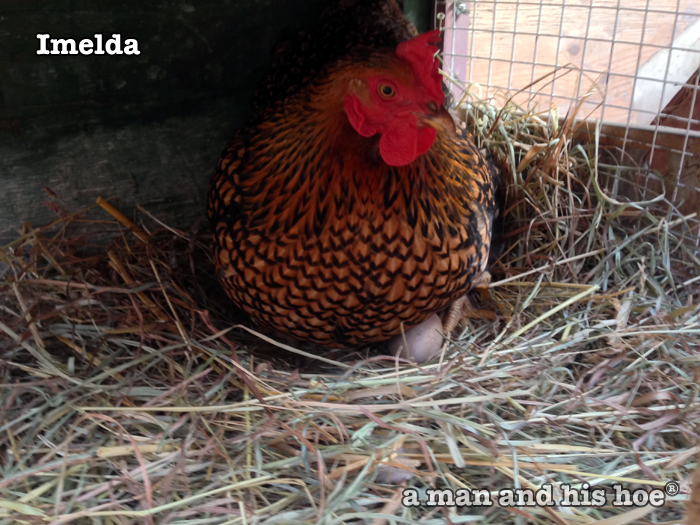

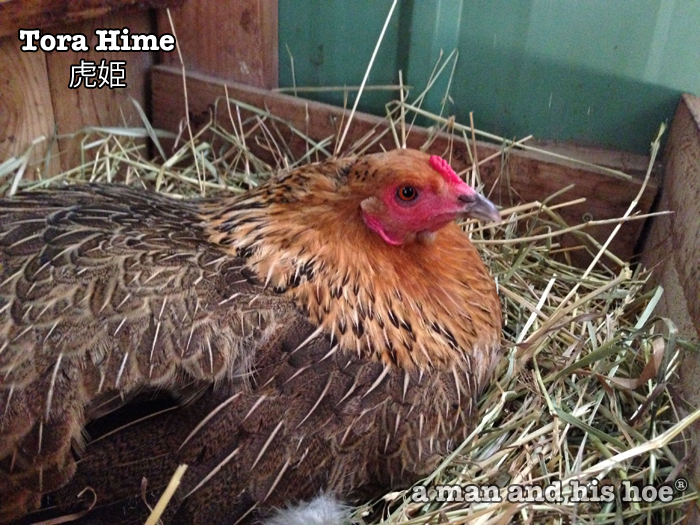
-
Chance to Be Alone

At a man and his hoe® chickens have plenty of chances to be alone. It’s early spring, the robins are back and the frogs’ chorus at night is almost deafening. The hens are just starting to go broody, with the first clutch scheduled to hatch around March 26. By mid summer, there will be up to a hundred new chicks running about with their mothers. Now is the time for chickens to have time alone.
In the space where a typical chicken farm will have 3,000 chickens, I have one. In a single hour, a chicken here will walk a greater distance than chickens in most farms walk during their entire short six to ten week lives.
You can either buy chickens which have plenty of chances to be alone, or buy chickens which never experience a single moment on their own.
